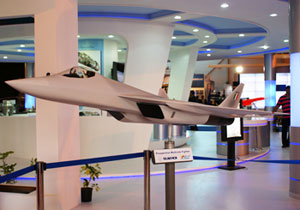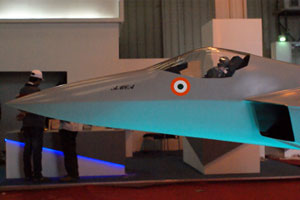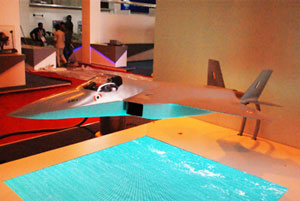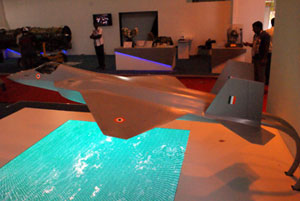INDIAN ARMED FORCES CHIEFS ON OUR RELENTLESS AND FOCUSED PUBLISHING EFFORTS

The insightful articles, inspiring narrations and analytical perspectives presented by the Editorial Team, establish an alluring connect with the reader. My compliments and best wishes to SP Guide Publications.

"Over the past 60 years, the growth of SP Guide Publications has mirrored the rising stature of Indian Navy. Its well-researched and informative magazines on Defence and Aerospace sector have served to shape an educated opinion of our military personnel, policy makers and the public alike. I wish SP's Publication team continued success, fair winds and following seas in all future endeavour!"

Since, its inception in 1964, SP Guide Publications has consistently demonstrated commitment to high-quality journalism in the aerospace and defence sectors, earning a well-deserved reputation as Asia's largest media house in this domain. I wish SP Guide Publications continued success in its pursuit of excellence.
- The layered Air Defence systems that worked superbly, the key element of Operation Sindoor
- Operation Sindoor | Day 2 DGMOs Briefing
- Operation Sindoor: India strikes back with Precision and Purpose
- Operation Sindoor: Resolute yet Restrained
- India’s Operation Sindoor Sends a Clear Message to Terror and the World – ‘ZERO TOLERANCE’
- Japan and India set forth a defence cooperation consultancy framework, talks on tank and jet engines
- Terrorist Attack in Pahalgam in Kashmir: Unfolding a long surgical war against PAK
- Lt General Pratik Sharma takes over Command of Indian Army's Northern Command
Fifth-Gen flavour at Aero India




“The prospective multi-role fighter is a joint Indo-Russian effort to create an advanced fighter primarily for the Indian Air Force having advanced features such as stealth, ultra-manoeuverability, highly integrated avionics suite, enhanced situational awareness, internal carriage of weapons and network centric warfare capabilities,” says HAL. The officially declared features describe it as a single-seat swing-role combat aircraft with a low-observable design capable of supersonic cruise flight regimes. The aircraft will be capable of high maneouverability both in subsonic and supersonic regimes. Sporting an active safety flight control system, the PMF is said to be designed for air superiority to engage targets in the air and for the strike role to engage targets on the ground and ocean surface. Electronic warfare support systems will enable it to operate in a dense hostile electronic environment comprising airborne and ground based radars and jammers. “High degree of agility to close air combat, both at medium altitudes as well as at low level,” says official documentation freshly released on the platform at the show. High precision, multi-channel, long-range air-to-air missiles, air-to-ground, air-to-sea and air-to-radar weapons. This official description of the aircraft alone throws up huge development and participation opportunities for Indian companies.
A top IAF officer attending Aero India as part of the IAF Chief’s entourage says, “In an ideal situation, the PAK FA should only be a shell. HAL and Indian industry must fill the aircraft with fully Indian systems, preferably with an Indian primary AESA sensor, avionics, cockpit and all other on board features. If not, it adds to our inventory of just another foreign aircraft for which we will have to worry persistently about spares and support.” India and Russia see the PMF as a new paradigm in their relations, but a large section of the IAF still worries about its continuation as a buyer of foreign aircraft, and how Aero India continues to be a reflection of that. And that’s where the second newly revealed concept comes into play at the show – the newly configured advanced medium combat aircraft (AMCA).
Until now a concept jet, the AMCA effort has intensified, and the Aeronautical Development Agency (ADA) is making every indication at Aero India that the design phase of the fifth generation attempt could be in its final stages, or indeed complete. With several different configurations over the last few years, the AMCA is often called India’s Raptor, though that may be a bit of stretch at this time. At the ADA stand this year, visitors will be treated to the first large model of an aircraft concept that has fructified into a formal project that has government sanction and generous funding. To be sure, the AMCA isn’t just another aircraft programme. This week, it was described by Chief of the DRDO as a “fifth generation plus” aircraft programme. “The AMCA will feature typical fifth generation design features and technologies such as stealth features, supercruise, super-maneouverability, thrust vectoring, advanced avionics based on integrated modular architecture, new generation display systems with touch panels, pilots associate to reduce pilot workload, advanced sensors like an AESA radar and infra-red search and track. Its declared missions in the air-to-air space include point defence, area defence and escort. In the strike role, it will be built to conduct SEAD, DEAD and precision strike missions.






